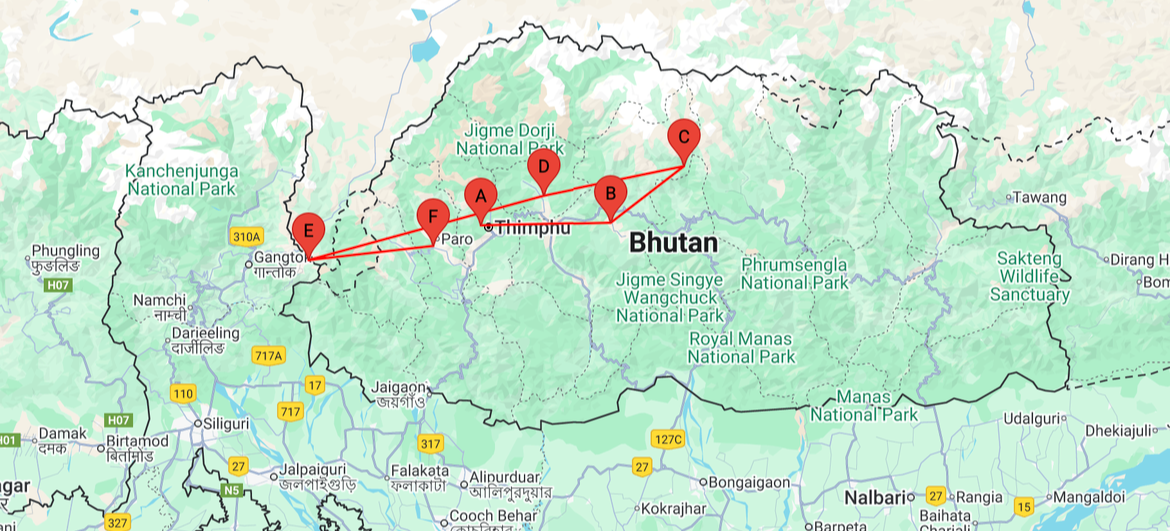Arrival / Paro - Thimphu
On a clear day, the flight to Paro is one of the most spectacular of all mountain flights. You will see major Himalayan peaks such as Everest, Kanchenjunga and Makalu, and on the final approach to Paro, Bhutan’s own snowy peaks of Chomolhari, Jichu Drake, and Tserimgang.
Upon arrival in Paro, meet your guide and drive to Thimphu, the capital of Bhutan. En-route stop at Chuzom, the confluence of Thimphu and Paro rivers. Three different styles of stupas adorn this confluence - Tibetan, Nepalese, and Bhutanese. Shortly before reaching Chuzom, you will see Tschogang Lhakhang, the Temple of the Excellent Horse. It is a private temple built in the 15th century as the result of visitation from Balaha, the excellent horse and a manifestation of Chenrezig, the compassionate Buddha. Overnight in Thimphu.





.png)
